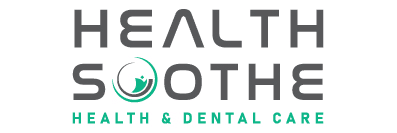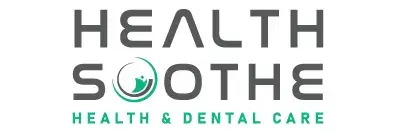Squats are easily one of the most popular functional strengthening exercises out there, and with good reason! The health benefits for squats are wide and known; They are one of the most effective exercises for the quads, glutes, and core. However, one of the most common mistakes when performing a squat is allowing the knees to collapse inward during the lowering portion. There are a few different factors that can be causing bow-legged squats.
For example, this is a characteristic of pronation distortion syndrome (PDS). Side note, pronation is a normal movement pattern, overpronation is when the ankle rolls inward too much and the arch of the foot flattens and stretches more than usual. Pronation distortion syndrome refers to the feet being overly pronated, which affects knee and hip movement; Specifically it causes the knees and hips to rotate internally, and in effect the knees move inward. This can lead to common injuries and pain such as knee pain, ACL tears, meniscal injuries, hip pain, and low back pain1.
You also may have heard the term dynamic knee valgus, which broadly refers to the knees bowing or caving inward when performing a movement. This, in itself, can lead to lower body injuries3. On the other hand, factors such as reduced ankle mobility or coordination can also play a role.
So, there are a few explanations for knees caving in during squats, but the bottom line is that allowing your knees to cave in increases your risk of injury and can actually decrease the effectiveness of the exercise.
That said, how do you improve it? You need to address the muscular imbalances associated with this movement. This means stretching the tight/overactive muscles and strengthening the lengthened/weakened muscles.
Step-by-Step Instructions to correct knee valgus during squats
Essentially, here is the gist:
- Foam roll the tight muscles: hip adductors, gastrocnemius, peroneals, bicep femoris, and hip flexors1,2
- Stretch the tight muscles: same muscles as above1,2
- Strengthen the weak muscles: gluteus medius and maximus1,2
Ok, let’s dive into each step and relevant exercises!
Step #1: Foam roll tight muscles
Foam rolling is a popular form of self-myofascial release (SMR) that helps relieve muscle tension from overactive muscles and improve mobility. It involves rolling over specific areas of the body with a dense cylinder-shaped foam pad to help lengthen tight muscles and break down knots in the muscles. This relieves pressure in these areas and helps promote better circulation. Also, it will make static stretching the muscle more easier.
Nonetheless, this step is optional. If you don’t have a foam roller on hand, you can move on to the next steps. However if you do, you can foam roll each area for 30 seconds twice through.
- Hip adductors – these muscles are located on the sides of the thighs facing the body. So, to foam roll this region, you will be in plank position with the foam roller under the target leg.
- Gastrocnemius – Also known as calf. Place the foam roll under the calf, and use your arms and other leg to support body weight as you glide your calf up and down the roller.
- Peroneals – These muscles are located on the side of your legs, facing away from your body. So, you will be lying on your side with the foam roller placed under the side of your leg.
- Biceps femoris – This is a hamstring muscle, which is located behind the front side of the thigh. The foam roller should be placed under your thigh with your hands and other leg supporting the movement.
- Hip Flexors – These muscles are located in the front of the hip. So, you will be lying down on your stomach with the roller under your hips.
One big advantage of foam rolling is that you get to control the amount of pressure you apply. Remember to take it slowly, this may seem uncomfortable if your muscles are very tight. Also, if you are more of a visual learner, feel free to youtube a video of how to foam roll each of the above regions, and then follow along with the instructor!
Step #2: Stretch tight muscles
Static stretching is a type of stretching that involves holding a stretched position for a period of time. It’s important to include static stretching as part of any workout routine, as it can help improve flexibility and range of motion, reduce risk of injury, and relax tight muscles. Tight muscles are often the source of stiffness in the body and can be difficult to stretch using active methods. In these cases, static exercises are the way to go as they allow you to slowly elongate the muscles and ease into a comfortable stretch.
You don’t necessarily have to do all the stretches shown below. It’s good to target each muscle once for 60 seconds. If you workout regularly, these stretches can be part of your cool-down (as well as the foam rolling). Listed below are a few stretches you can do:
- Hip adductors: standing side lunge hold, butterfly stretch, and frog stretch.
- Gastrocnemius: standing calf stretch, downward dog, and seated calf stretch.
- Peroneals: There is one main way to stretch these muscles. Sitting in a chair, fold the target leg over your knee (similar to sitting cross legged but only with one leg). Grab your foot with your hands and bring the bottom of your foot towards the ceiling.
- Bicep femoris: seated toe reach, standing forward bend, and lying hamstring stretch.
- Hip Flexors: kneeling hip flexor stretch, standing lunge stretch, and pigeon pose.
Step #3: Strengthen Gluteus Medius and Maximus….Most important step!
Ok, this is perhaps one of the most important steps. Hip abductors allow you to pull and keep your legs to the side during squatting. As such weakness of the hip abductors leads to the knees caving in during exercise. The primary hip abductor is the gluteus medius while the gluteus maximus is a secondary hip abductor. With this in mind, it is important to realize that proper hip abduction strength not only helps ensure good form, but it will also protect against injury over time, making it an integral part of your routine. Below is a list of great glute medius exercises:
- Clamshells
- Lateral squat walks with resistance band
- Side lunges
- Banded glute bridges with abductions
- Side lying leg raises
- Fire hydrants
- Curtsy lunges
I suggest adding some of the above exercises into your routine, and add in resistance bands or dumbbells to make the exercise more challenging. Choosing a resistance that challenges you without breaking form is key. You can do 8-10 repetitions of the exercises for sets of 2-3. Also, these are just some suggestions, you are welcome to do other glute medius exercises too.
Wrapping Up
Bringing everything together, it is important to use foam rolling, stretching and strengthening exercises to prevent the knees from caving in during exercise. Foam-rolling can be used to release tight muscles that may be causing the issue while static stretching will help further increase flexibility. Additionally, strengthening gluteus medius should also be a priority as this muscle helps keep the knees in proper alignment. Implement these steps when creating your workouts. Remember to be consistent and take rest breaks when needed. As always, if you want personalized guidance or experience pain or injury, I encourage you to seek out help from a professional.
Happy training!
Author Bio
Priya Patel, holds a Bachelor of Science in exercise science from the University of Delaware. As a Certified Personal Trainer, Nutritional Specialist, and more importantly – a lifelong health nerd – she loves anything fitness, nutrition, and wellness related.
As a student physical therapist at the University of Delaware, she continue her education and learns even more about how to optimize human function and rehabilitation. When she isn’t prepping for her upcoming exam, doing clinicals, and diving into research projects, you can find her creating applicable content for her health blog. In the end, she hopes to instill in you the importance of making both your mental and physical health a priority, and empower you to live your best life.
In her spare time, she enjoys spending time with friends and family, reading, traveling, working-out, and occasionally binge watching Friends.
References
- Dean, F., Lelm, D., Lester, E., Schaffer, B., & Gelbrich, L. (2018). Certified Personal Trainer Certification Manual. Fitness Mentors.
- Golchini, A., Rahnama, N., & Lotfi-Foroushani, M. (2021). Effect of Systematic Corrective Exercises on the Static and Dynamic Balance of Patients with Pronation Distortion Syndrome: A Randomized Controlled Clinical Trial Study. International Journal of Preventive Medicine, 12, 129. https://doi.org/10.4103/ijpvm.IJPVM_303_19
- Wilczyński, B., Zorena, K., & Ślęzak, D. (2020). Dynamic Knee Valgus in Single-Leg Movement Tasks. Potentially Modifiable Factors and Exercise Training Options. A Literature Review. International journal of environmental research and public health, 17(21), 8208. https://doi.org/10.3390/ijerph17218208

Isreal olabanji a dental assistant and public health professionals and has years of experience in assisting the dentist with all sorts of dental issues.
We regularly post timely and trustworthy medical information and news on Fitness, Dental care, Recipes, Child health, obstetrics, and more.




